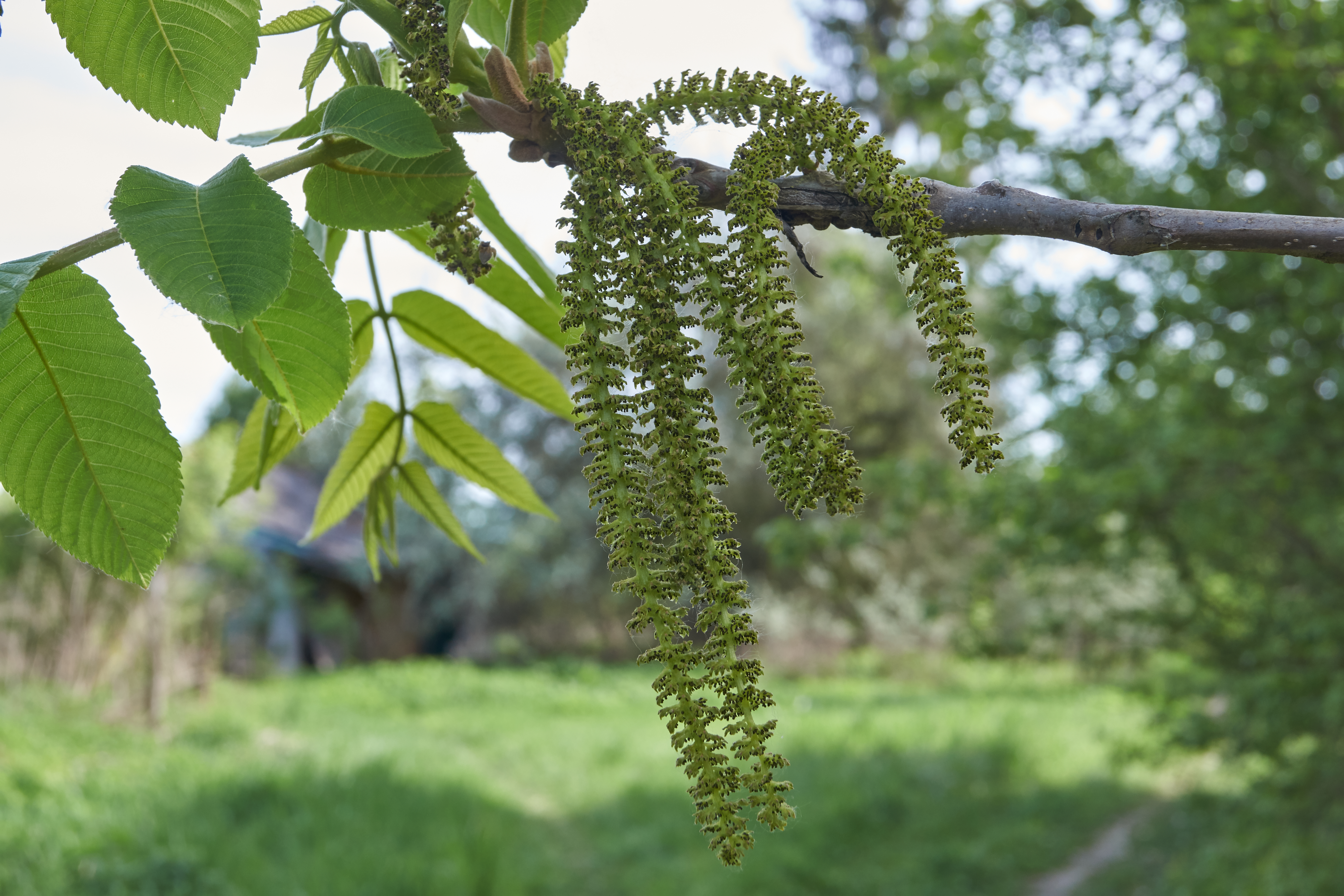Butternut
(Juglans cinerea)

Description
Juglans cinerea, commonly known as butternut or white walnut, is a species of walnut native to the eastern United States and southeast Canada. The distribution range of J. cinerea extends east to New Brunswick, and from southern Quebec west to Minnesota, south to northern Alabama and southwest to northern Arkansas. It is absent from most of the Southern United States. The species also proliferates at middle elevations (about 2,000 ft or 610 m above sea level) in the Columbia River basin, Pacific Northwest; as an off-site species. Trees with 7 ft or 2.1 m (over mature) class range diameter at breast height were noted in the Imnaha River drainage as late as January 26, 2015. Butternut favors a cooler climate than black walnut and its range does not extend into the Deep South. Its northern range extends into Wisconsin and Minnesota where the growing season is too short for black walnut. J. cinerea is a deciduous tree growing to 20 m (66 ft) tall, rarely 40 m (130 ft). Butternut is a slow-growing species, and rarely lives longer than 75 years. It has a 40–80 cm (16–31 in) stem diameter, with light gray bark. The leaves are alternate and pinnate, 40–70 cm (16–28 in) long, with 11–17 leaflets, each leaflet 5–10 cm (2–4 in) long and 3–5 cm (1+1⁄4–2 in) broad. Leaves have a terminal leaflet at the end of the leafstalk and have an odd number of leaflets. The whole leaf is downy-pubescent, and a somewhat brighter, yellower green than many other tree leaves. Like other members of the family Juglandaceae, butternut's leafout in spring is tied to photoperiod rather than air temperature and occurs when daylight length reaches 14 hours. This can vary by up to a month in the northern and southernmost extents of its range. Leaf drop in fall is early and is initiated when daylight drops to 11 hours. The species is monoecious. Male (staminate) flowers are inconspicuous, yellow-green slender catkins that develop from auxiliary buds and female (pistillate) flowers are short terminal spikes on current year's shoots. Each female flower has a light pink stigma. Flowers of both sexes do not usually mature simultaneously on any individual tree.
Taxonomic tree:







